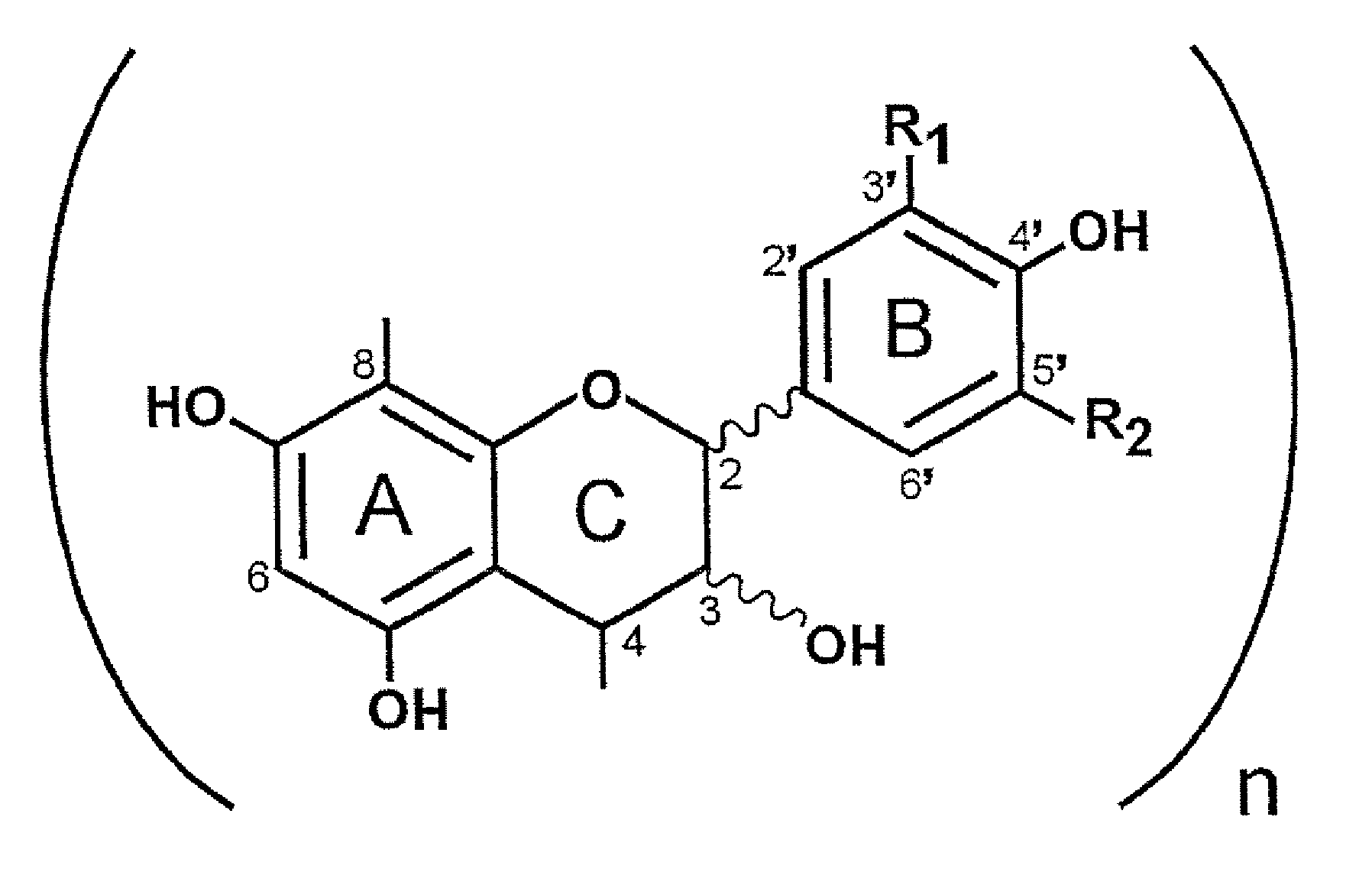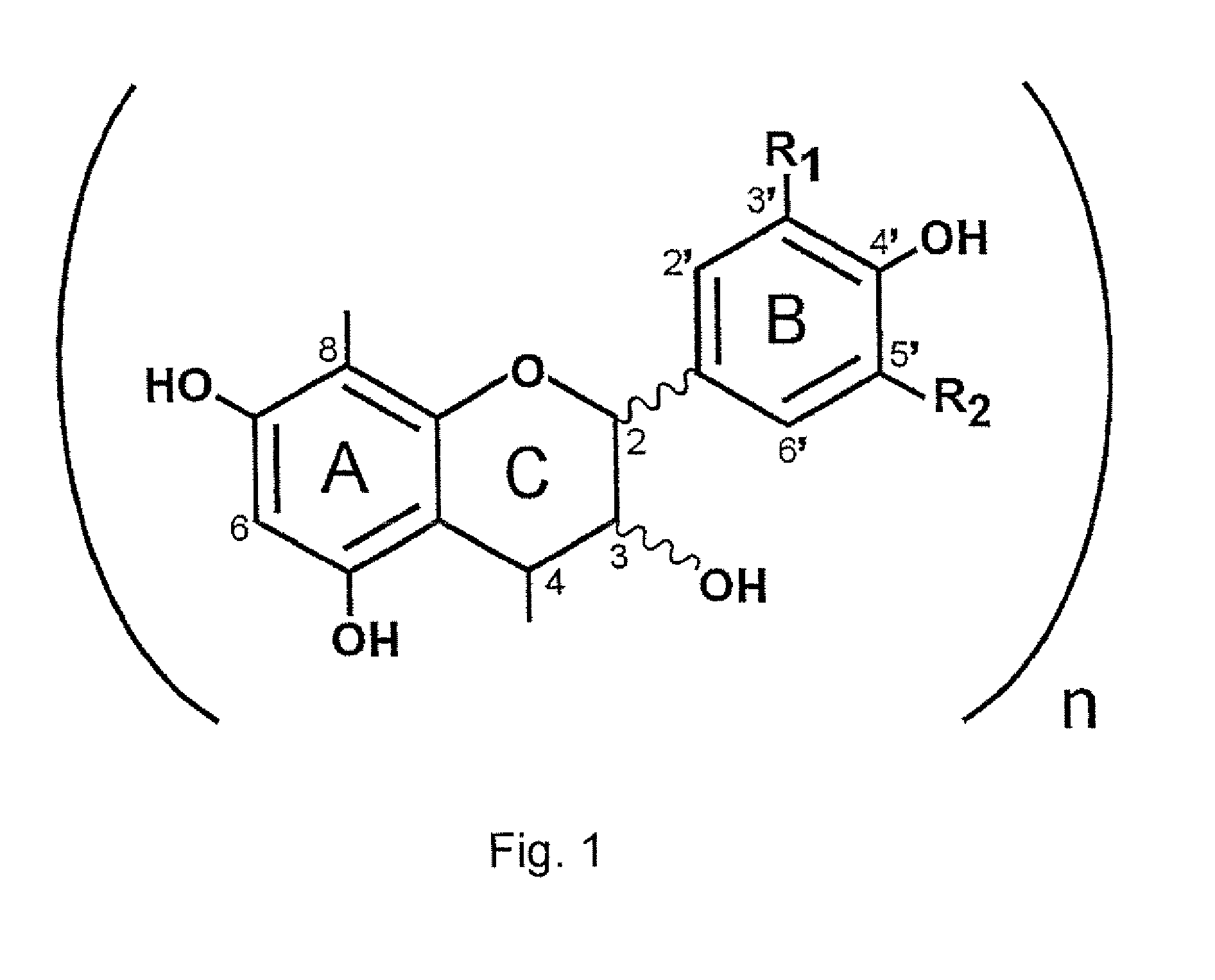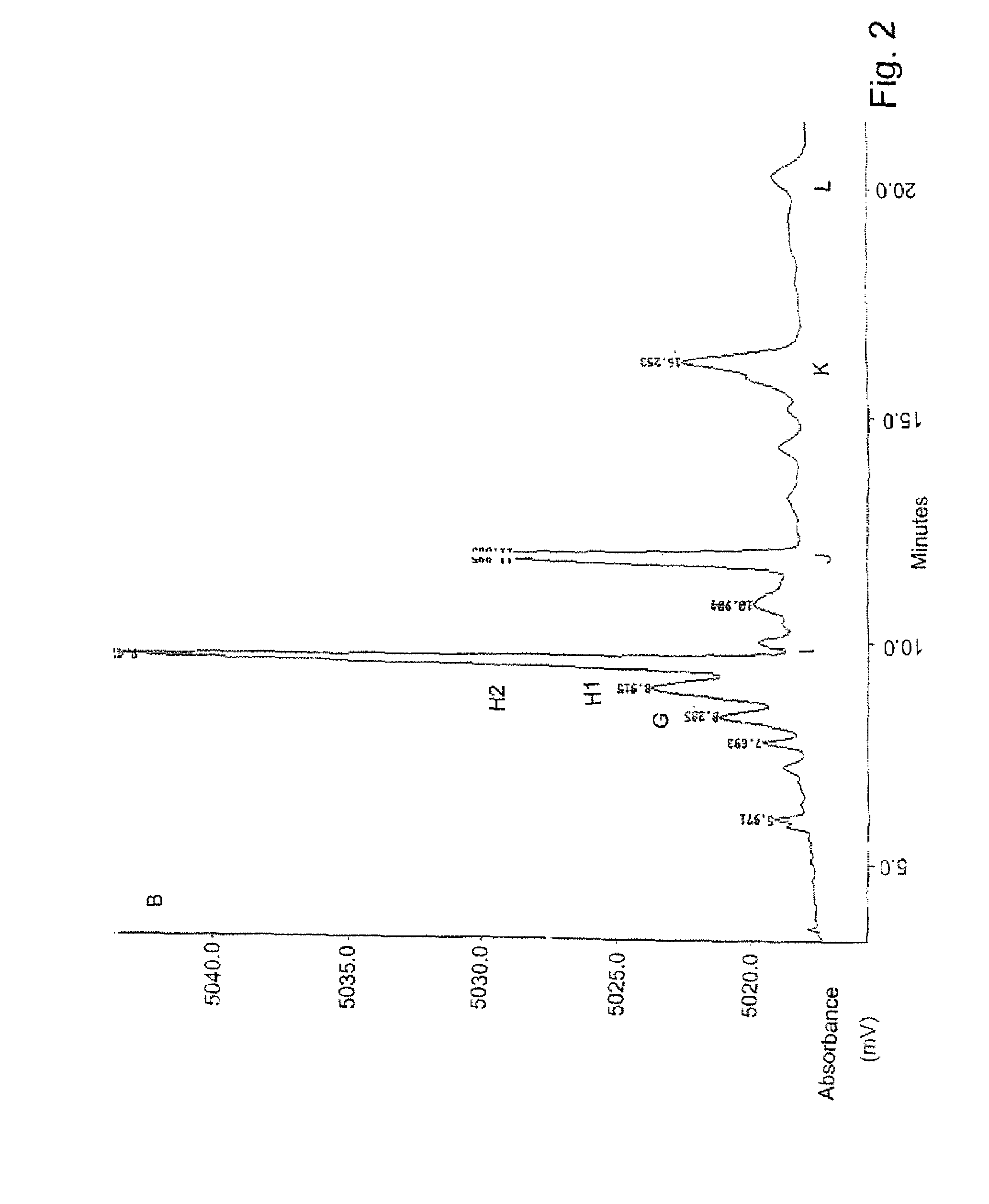Proanthocyanidins for the Treatment of Amyloid and Alpha-Synuclein Diseases
a technology of proanthocyanidins and amyloids, applied in the direction of biocide, plant/algae/fungi/lichens ingredients, drug compositions, etc., can solve the problems of toxicity and neuronal cell death, no cure or effective treatment, no literature teaches or suggests, etc., and achieves potent anti-amyloid and anti--synuclein/nac activity and detailed characterization of proanthocyanidin poly
- Summary
- Abstract
- Description
- Claims
- Application Information
AI Technical Summary
Benefits of technology
Problems solved by technology
Method used
Image
Examples
example 1
Isolation of Amyloid Inhibitory Components from Uncaria tomentosa and PTI-777
[0206]We have previously reported in U.S. application Ser. No. 09 / 753,313 filed Dec. 29, 2000, U.S. application Ser. No. 09 / 938,987 filed Aug. 24, 2001, U.S. application Ser. No. 60 / 271,777 filed Feb. 27, 2001, and U.S. application Ser. No. 60 / 338,721 filed Nov. 2, 2001 pertaining to the discovery of amyloid inhibitory components in an extract of the rain forest woody vine, Uncaria tomentosa, with regards to the treatment of neurological disorders involving beta-amyloid protein (Aβ) or α-synuclein / NAC fibrillogenesis and other amyloid disorders. We have previously reported the discovery that a methonolic extract of the powdered bark of Uncaria tomentosa contains potent amyloid inhibitory activity that is relatively concentrated in a mixture of compounds consisting of mainly polyphenols. Tests of samples of pure oxindole alkaloids that were known to be major components of Uncaria tomentosa also demonstrated ...
example 2
Isolation and Identification of Peak H2 from PTI-777 as an Epicatechin-Epicatechin Dimer
General Experimental Procedures
[0214]All solvents were distilled before use and were removed by rotary evaporation under vacuum at temperatures up to 20-60°. Octadecyl functionalised silica gel (C18) was used for reversed-phase (RP) flash chromatography, and Merck silica gel 60, 2-400 mesh, 40-63 μm, was used for silica gel flash chromatography. TLC was carried out using Merck DC-plastikfolien Kieselgel 60 F254, first visualised with a UV lamp, and then by dipping in 5% aqueous ferric chloride solution. Optical rotations were measured on a Perkin-Elmer 241 polarimeter. Mass, ultraviolet (UV), and infra-red (IR) spectra were recorded on Kratos MS-80, Shimadzu UV 240, and Perkin-Elmer 1600 FTIR instruments, respectively, NMR spectra, at 25-, were recorded at 500 or 300 MHz for 1H and 125 or 75 MHz for 13C on Varian INOVA-500 or VXR-300 spectrometers. Chemical shifts are given in ppm on the δ scale ...
example 3
Isolation and Identification of Peak H1 from PTI-777
General Experimental Procedures
[0235]The minor component of peak H, referred to as H1, of the PTI-777 extract was also isolated by a series of chromatographic techniques, monitored by HPLC (see Example 17 Experimental Procedures for details). We initially separated the original PTI-777 extract (see HPLC tracing, FIG. 2) by column chromatography over silica gel, where 20% methanol in chloroform gave a fraction rich in the two components of peak H (134 mg). An HPLC method was developed to separate the two main components of peak H on a preparative scale)(see HPLC tracing, FIG. 3), to give us a mostly pure H1(16 mg)(see HPLC tracing, FIG. 4) and pure H2 (23 mg).
[0236]A −ve ion electrospray mass spectrum of H1 gave a clean 100% ion at 577 daltons. This is appropriate for the molecular ion (M+−H) of a molecular formula of C30H26O12 (molecular weight 578), such as a dimer of two epicatechin, or isomeric units. We had previously isolated ...
PUM
| Property | Measurement | Unit |
|---|---|---|
| diameter | aaaaa | aaaaa |
| length | aaaaa | aaaaa |
| elevations | aaaaa | aaaaa |
Abstract
Description
Claims
Application Information
 Login to View More
Login to View More - R&D
- Intellectual Property
- Life Sciences
- Materials
- Tech Scout
- Unparalleled Data Quality
- Higher Quality Content
- 60% Fewer Hallucinations
Browse by: Latest US Patents, China's latest patents, Technical Efficacy Thesaurus, Application Domain, Technology Topic, Popular Technical Reports.
© 2025 PatSnap. All rights reserved.Legal|Privacy policy|Modern Slavery Act Transparency Statement|Sitemap|About US| Contact US: help@patsnap.com



